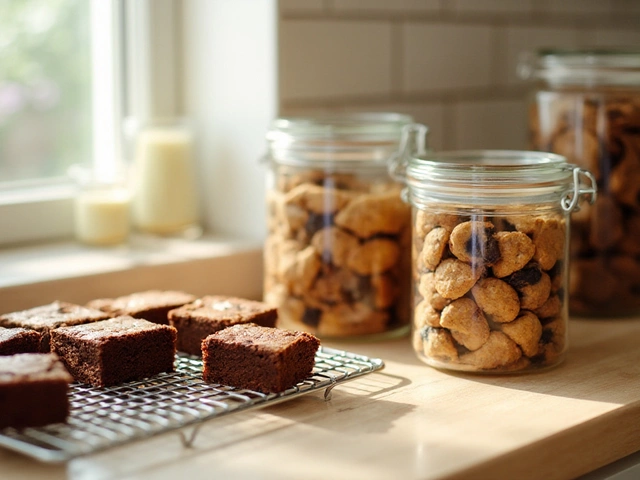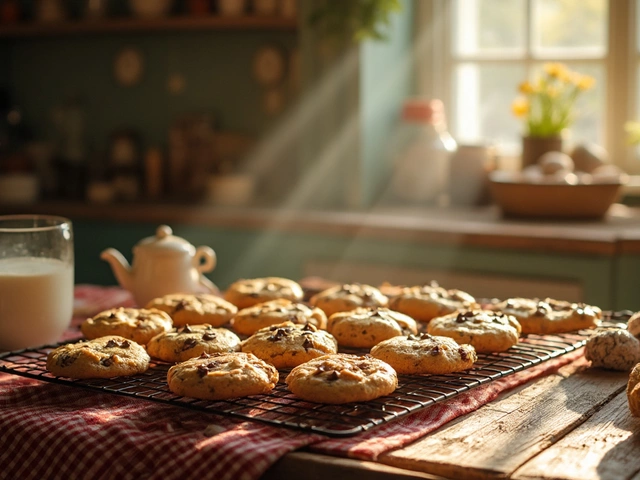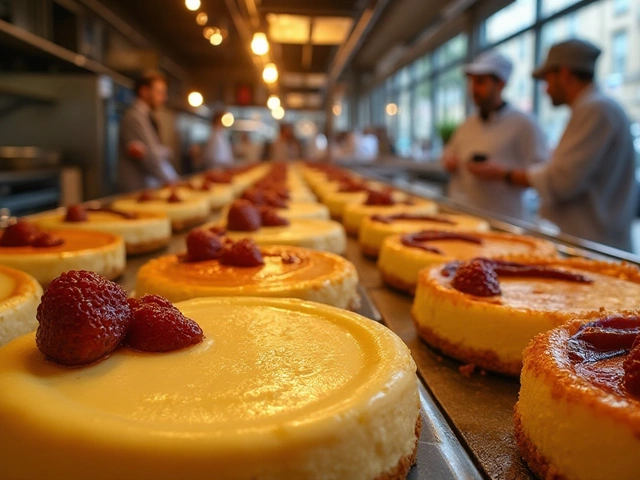Fudge Recipes: Your Go‑to Hub for Silky, Creamy Fudge
If you’ve ever ended up with hard, grainy fudge instead of a melt‑in‑your‑mouth slab, you’re not alone. The good news? All the tricks you need are right here. This tag page gathers the most useful fudge guides on the site, so you can skip the guesswork and get the perfect, creamy batch every time.
Why Temperature Matters
The soft‑ball stage is the magic number for fudge. Most recipes say “cook to 235‑240°F (113‑116°C).” Hit that range and you’ll lock in a smooth texture; go a few degrees higher and you risk a hard, crumbly mess. Our "Fudge Temperature Guide" breaks down how to read a candy thermometer, how altitude changes the numbers, and quick fixes if you overshoot. No need for fancy equipment – a simple kitchen thermometer does the trick.
Altitude can throw you off because water boils at a lower temperature up high. The guide shows you how to add a couple of extra degrees or lengthen the boil by a minute to stay in the sweet spot. It’s the same principle whether you’re in the Scottish Highlands or the flatlands of Kent.
Simple Tricks for Smooth Fudge
Even if you nail the temperature, you can still end up with grainy fudge if you stir the wrong way. The secret is to let the mixture sit undisturbed once it reaches the soft‑ball stage. When it looks thick and glossy, give it a gentle stir for about a minute, then pour it into your pan. A quick stir keeps the sugar crystals from forming a gritty texture.
Our "Real Secret to Perfect, Creamy Fudge" article dives deeper into the science. It explains why using heavy‑cream instead of milk adds fat that coats sugar crystals, preventing graininess. It also warns against adding too much butter – a tablespoon or two is enough to enrich the flavor without making the fudge greasy.
Another common mistake is using the wrong sugar. Granulated white sugar works best; brown sugar brings extra moisture that can throw off the temperature and texture. If you love the caramel notes of brown sugar, stick to the recipe that’s been tested for it – the guide tells you exactly how to adjust the boil time.
Storing your fudge right matters, too. Wrap it tightly in parchment paper, then aluminum foil, and keep it in a cool, dry place. This prevents a crust from forming on the surface and keeps the interior soft. If you need to freeze it, slice it first, then wrap each piece – it thaws quickly and stays creamy.
Feeling adventurous? The tag also includes creative twists, like adding espresso powder for a mocha kick or swirling in caramel for a ribboned effect. Each variation follows the same temperature rules, so you can experiment without fear of a disaster.
Bottom line: perfect fudge is all about three things – hitting the soft‑ball stage, gentle stirring, and the right fat content. Use the guides on this page, follow the step‑by‑step tips, and you’ll be serving glossy, melt‑in‑the‑mouth squares in no time.
Browse the posts, pick a recipe that sounds good, and give it a go. The more you practice, the easier it becomes. Soon you’ll be the go‑to fudge maker for friends, family, and anyone who walks by your kitchen smelling chocolatey sweetness.

What Do Americans Call Fudge? The Delicious World of Classic Fudge Recipes
Ever wondered what Americans mean when they talk about fudge? This article breaks down what fudge actually is, how it shows up in American homes, and all the little ways people enjoy it. You'll find out why it's such a big deal around the holidays and what makes American-style fudge stick out from the rest. If you love sweets or want to try fudge recipes, this guide gives you all the basics, tips, and fun facts.
View More
3 Ingredient Fudge Not Setting? Here’s What’s Going Wrong
Wondering why your 3 ingredient fudge refuses to set? This article breaks down the top reasons for runny or soft fudge and how to fix it. Learn about the roles of each ingredient, typical mistakes, and simple tweaks to get perfect fudge every time. Get practical advice you can use today. Stop stressing about failed batches and discover how to turn fudge flops into rich, sliceable treats.
View More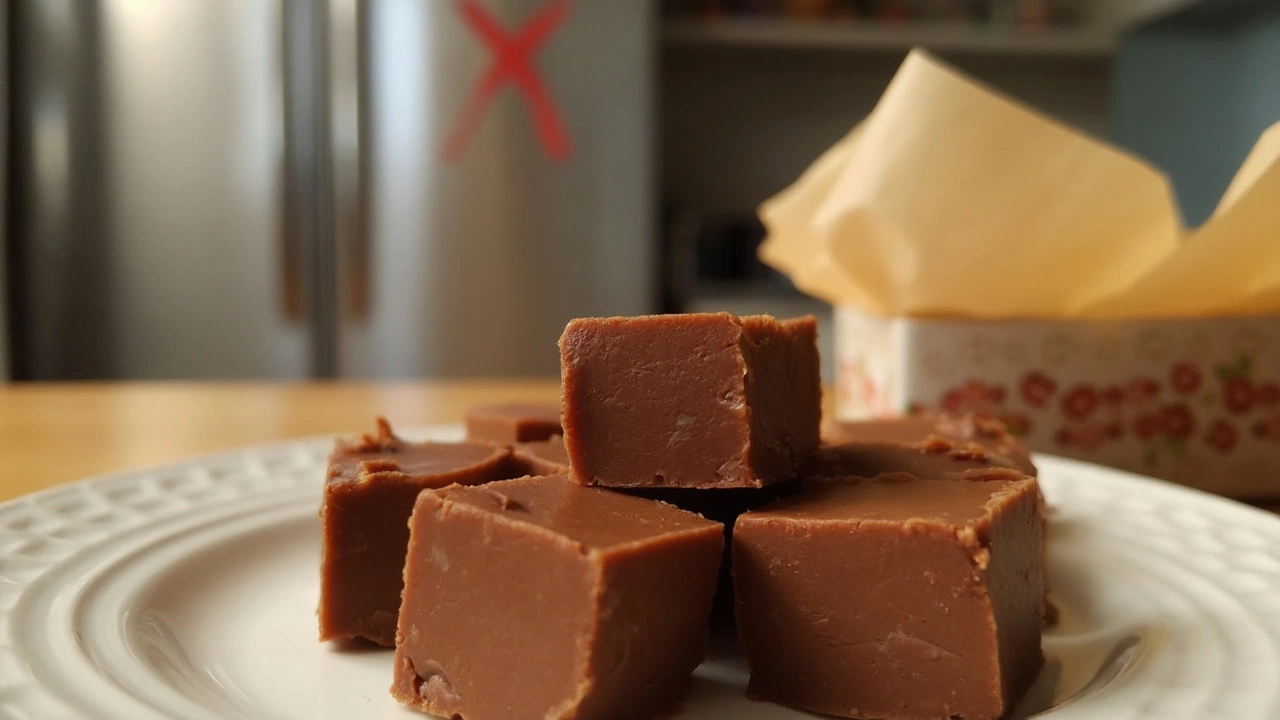
Why Should You Not Put Fudge in the Fridge? (And What to Do Instead)
Storing fudge in the fridge seems logical, but it can actually ruin your treat’s texture and flavor. This article explains why refrigeration makes fudge grainy, how temperature changes affect its ingredients, and offers tips for keeping your fudge smooth and delicious. You'll discover the ideal way to store fudge to maintain its freshness. Protect your homemade fudge from common storage mistakes and learn what really works.
View More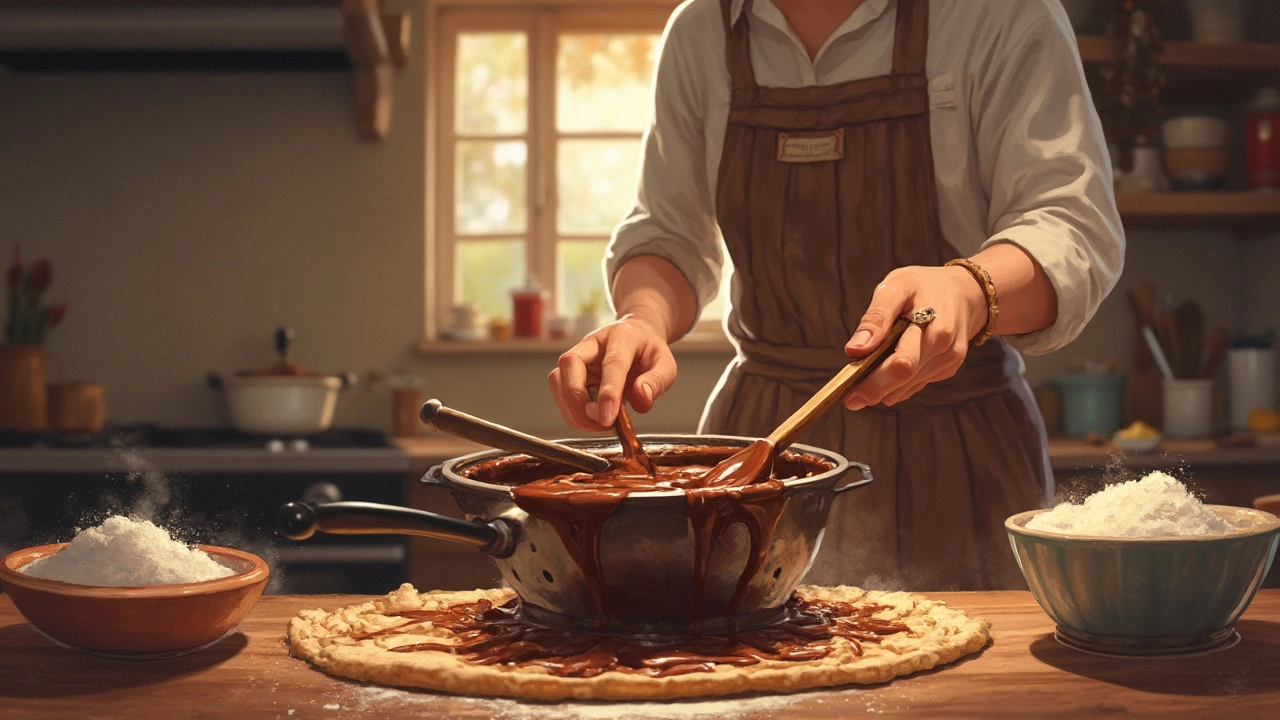
How to Keep Fudge from Turning Sugary: The No-Fuss Guide
Nobody wants gritty fudge, but getting that perfectly smooth bite can be tricky. This article explains why fudge gets sugary, how to avoid it, and what really works in the kitchen. Discover proven tips and key mistakes people make. Finally, learn what to do if your fudge still sugars up, so you don’t have to toss the whole batch.
View More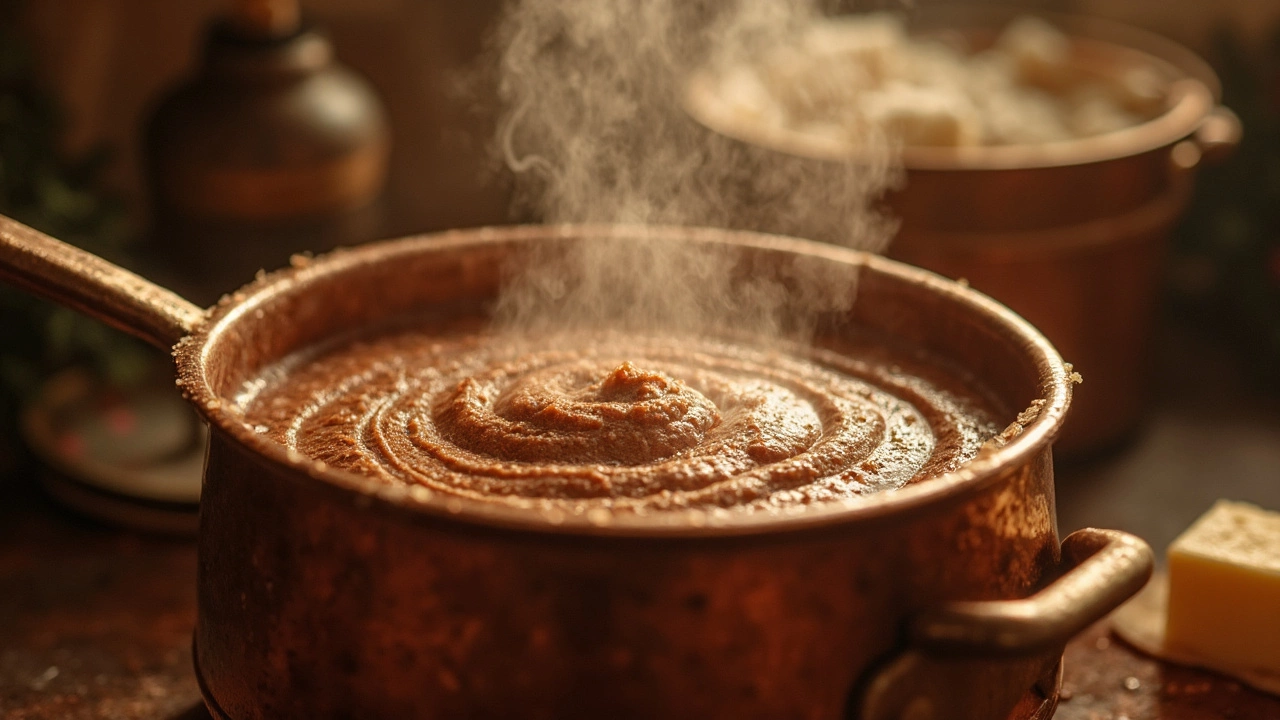
What Makes Fudge Good? Easy Tips for Homemade Perfection
Curious why some fudge turns out dreamy while other batches feel gritty or dry? This article breaks down the magic behind good fudge, from the science of sugar crystals to tricks for the perfect texture and flavor. You'll find honest, practical tips, interesting facts, and everything you need to level up your homemade fudge. Whether you're a first-timer or an old pro, these insights make every batch a little sweeter. Get ready to satisfy your sweet tooth with fudge that actually melts in your mouth.
View More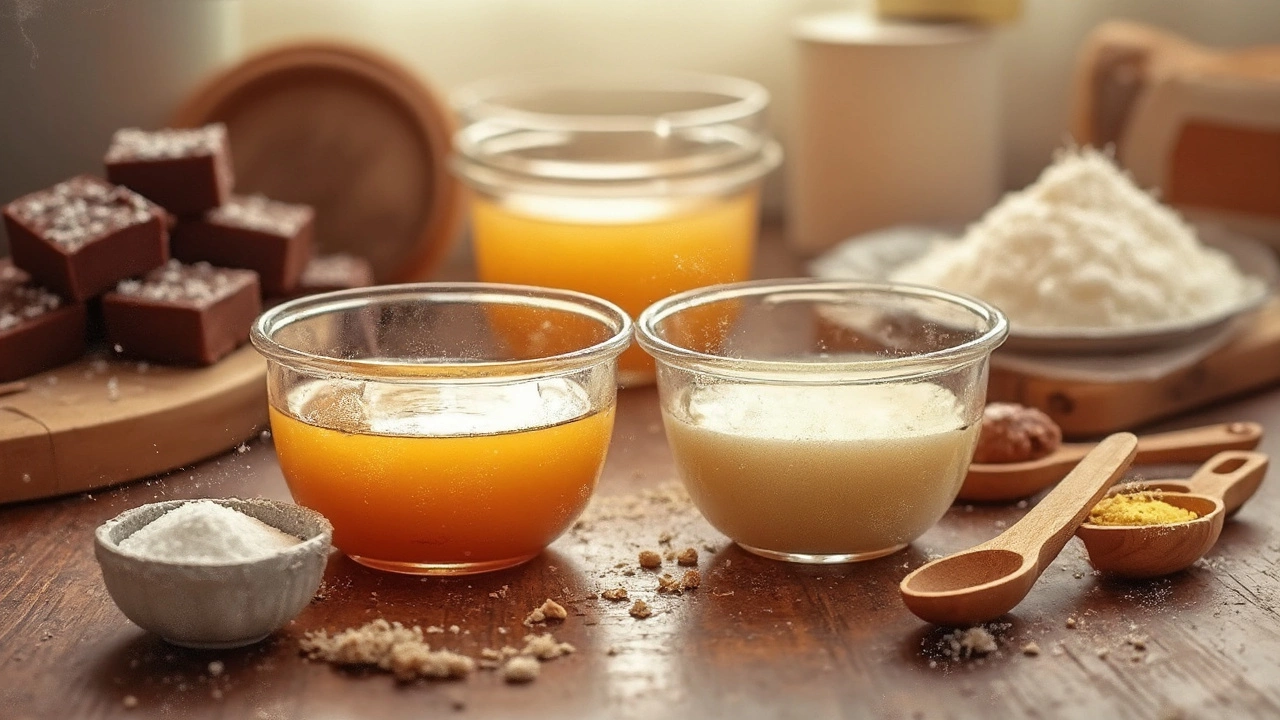
Can I Use Honey Instead of Condensed Milk? Sweet Swaps for Fudge Recipes
Is honey a good substitute for condensed milk in fudge recipes? This article breaks down what happens when you swap one for the other, and what you need to adjust to get great-tasting fudge. Get practical tips for measurements, texture, and flavor changes. Find out which swaps work best, and learn a bit about the science behind stickiness and sweetness in your favorite treats. Save your next batch of fudge from a sticky mess—or a crunchy flop.
View More
What Not to Do When Making Fudge
Making fudge can seem simple, but even small mistakes can ruin the batch. Dive into the common pitfalls of fudge-making, and learn how to avoid grainy texture, burning chocolate, and more. Whether you're a beginner or seasoned pro, this guide offers practical advice and insights to help you achieve velvety, mouthwatering fudge every time.
View More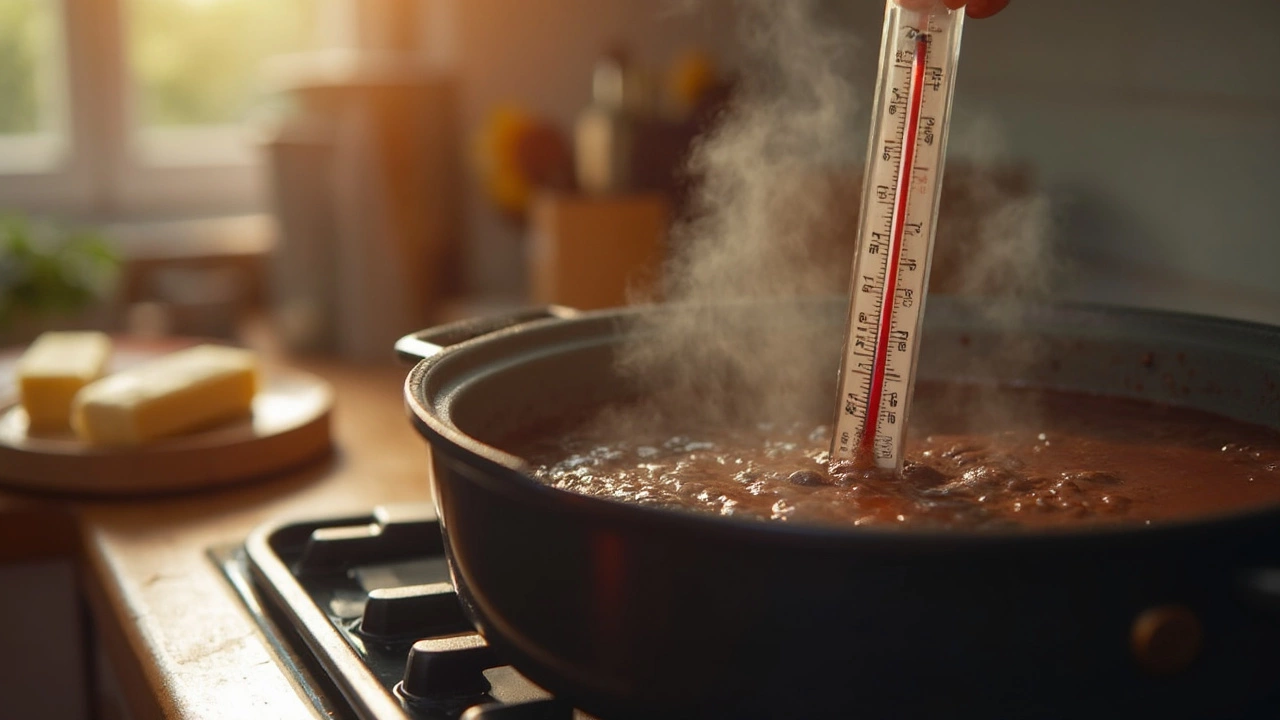
Should I Stir Fudge While Boiling?
Discover the secrets to perfectly boiled fudge by understanding when and how to stir it. This article unravels the science behind fudge making, offering practical tips to achieve that smooth, creamy texture. Explore common mistakes to avoid and learn about the importance of patience and precision in this sweet journey. Perfect for both novice and seasoned candy makers, this guide keeps it real and relatable.
View More
Discovering Mackinac Island: The Fudge Capital of the World
Nestled in the heart of the Great Lakes, Mackinac Island holds the sweet title of the world's fudge capital, charming visitors with both its scenic beauty and mouth-watering confections. Beyond the picturesque landscapes, the island's fudge-making tradition dates back over a century, delighting sweet-toothed adventurers. Learn about the island's fudgy fame and pick up insider tips for creating your own rich, creamy fudge. Get ready to explore the secret behind perfect fudge consistency and why Mackinac's creations stand out.
View More
Mastering the Art of Fudge: Perfect Timing and Techniques
Discover the secrets to knowing when your fudge is perfectly done with our comprehensive guide. Understand the science behind fudge-making and learn tips to achieve that perfect texture. Explore various methods for testing fudge readiness and avoid common pitfalls. Become a fudge-making expert and delight your family and friends with your confectionery creations.
View More
Discovering the Sweet Secrets of American Fudge Recipes
American fudge is a quintessentially sweet treat known for its rich, creamy texture and melt-in-the-mouth goodness. Originating in the United States, this confectionery delight is made from a basic blend of sugar, butter, and milk or cream, often enhanced with delightful flavors. By exploring different methods and ingredients, you can create a variety of fudge types tailored to satisfy every sweet tooth. This guide dives into the fascinating world of American fudge, offering tips, historical tidbits, and simple recipes to try at home.
View More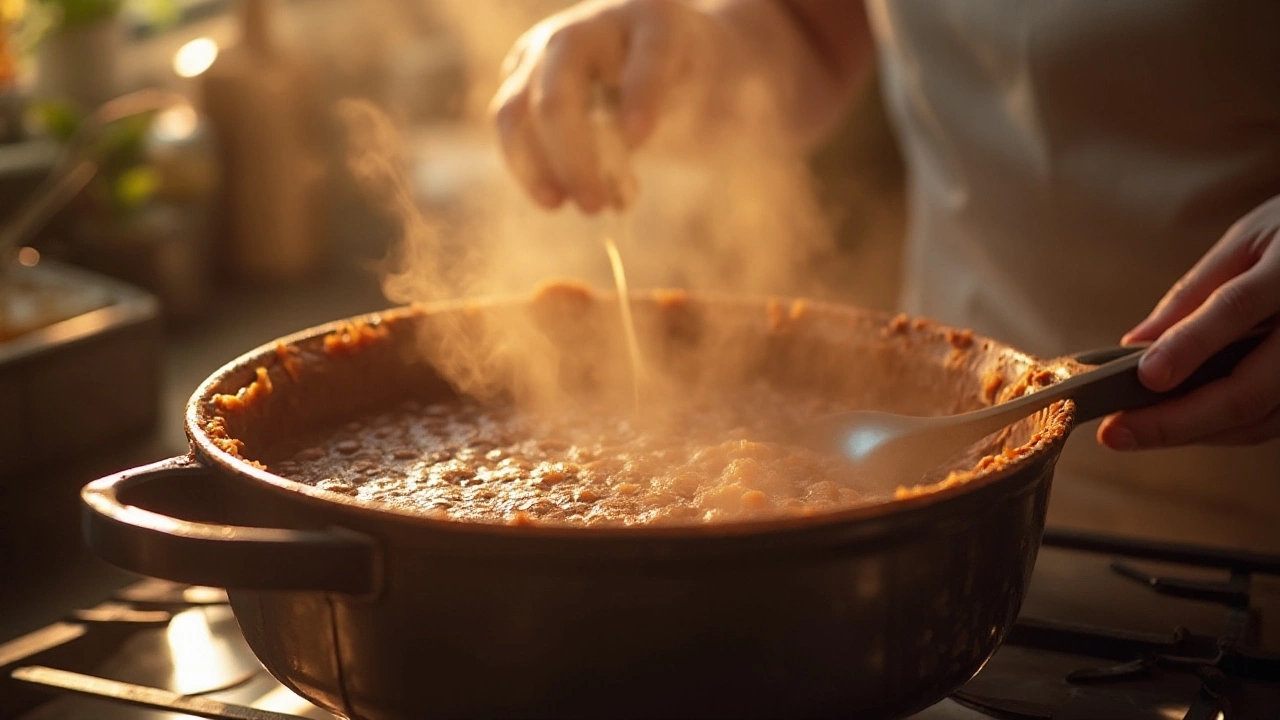
The Perils of Stirring Fudge Too Early and How to Avoid Them
Stirring fudge too early during the cooking process can significantly affect its texture, leading to a grainy or crystallized finish. Understanding the science behind this common mistake and learning how to properly make fudge can ensure a silky, smooth outcome every time. Discover the critical moments of fudge making and employ expert tips to perfect this sweet concoction and impress at any occasion.
View More

